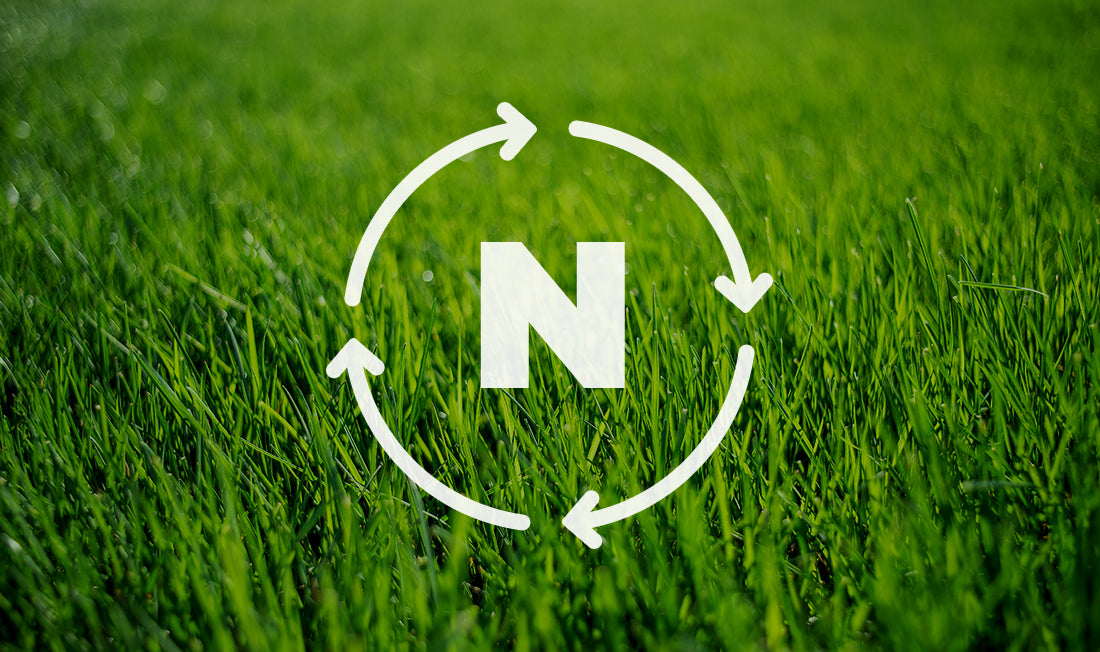In the soil, nitrogen (N) is found in three different pools: (i) organic forms of N are present in soil organic matter, (ii) N in the form of ammonium ions (NH4+) is fixed to negatively charged exchange sites of clay minerals, and (iii) N in the form of ammonium and nitrate (NO3-) are dissolved in the soil solution. Plants utilize ammonium and nitrate, both inorganic forms of nitrogen, for plant processes necessary for proper growth and development.

If the atmosphere contains roughly 78% N, then plants should have no problem obtaining the N they need for growth, right? Not necessarily; remember that plants utilize two forms of N, nitrate and ammonium, so the gaseous nitrogen (N2) in the atmosphere must transform to become available for plant uptake. This transformation is facilitated by a constant cycle which takes place in the soil and the atmosphere. The N cycle is one of the most important cycles for sustaining life on earth. In its most basic form, the N cycle takes atmospheric N or N fertilizers and turns them into plant-available forms in the soil. These plant-available forms turn back into N gas, only for the cycle to repeat itself. Many vital processes, which result in additions and losses to the supply of plant-available N in the soil, are a part of this cycle:

Additions:
Fixation - Nitrogen fixation is a biological or industrial process that results in atmospheric molecular N being converted into plant-available forms or related nitrogenous compounds. Biological nitrogen fixation is a necessary process carried out by soil microbes or industrial fertilizer manufacturers. Lightning is also capable of transforming atmospheric-N into a plant-available form.
Mineralization - Nitrogen mineralization occurs when soil microbes begin to decompose the organic N found in plant and animal residues and organic fertilizers. This decomposition results in an addition of ammonium to the soil. Mineralization is a biological process affected by soil temperature, moisture status, and aeration.
Nitrification - Nitrification is a process that results in the conversion of ammonia to nitrate. Nitrification is facilitated by microorganisms that oxidize ammonia to nitrite (NO2-) and then oxidize nitrite to nitrate. Nitrate is the most plant-available form of nitrogen but is also prone to leaching (discussed below).
Losses:
Denitrification - Nitrogen can be lost to the atmosphere through an anaerobic process called denitrification (aerobic denitrification can occur). This process is carried out by anaerobic bacteria using oxidized forms of nitrogen as electron acceptors to perform anaerobic respiration. It ultimately leads to gaseous N (N2O, N2) being released into the atmosphere as it is lost from the soil.
Immobilization - Nitrogen immobilization is essentially the opposite of mineralization. Both mineralization and immobilization occur simultaneously in the soil. Immobilization occurs when soil organisms can’t get the N they need solely from the material which they are decomposing. They scavenge the soil N and use it to synthesize proteins and other N-containing compounds.
Leaching - Nitrogen leaches from the soil profile in the form of nitrate. The nitrate ion is water-soluble and negatively charged. Cation exchange sites, responsible for retaining the majority of nutrients in the soil, are also negatively charged. Since two like charges repel each other, nitrate can easily leach through the soil profile as water drains.
Volatilization - Ammonium volatilization is the loss of N in the form of ammonia gas (NH3) to the atmosphere. It occurs when the highly volatile urea molecule (CH4N2O) is left on or near the soil surface and is volatilized to ammonia gas. Remember to irrigate after your urea fertilizer application and incorporate it into the soil as soon as possible to reduce losses to volatilization.

The processes of plant nutrient uptake and fertilizer inputs also affect the amount of plant-available N in the soil. Let’s focus on the plant uptake part and discuss how nitrogen ends up as an essential component to the health and vigor of your lawn.
Due to the rapid nitrification of ammonium ions in aerated soils, nitrate is the primary N form taken up by plants. According to Bryson et al. (2014) nitrate and ammonium should be regarded as two different nutrients due to their different reactions within plants. The authors state that it’s typically recognized that ammonium greens a plant, and nitrate grows a plant. Ammonium is quickly converted into N compounds, like amino acids, immediately after absorption due to its level of toxicity if allowed to accumulate within a plant. Nitrate-N can be stored in the plant's vacuoles until needed for forming N compounds. Plants generally prefer a combination of both sources on N, but the degree of affinity can vary between species.

So, once the plant takes up the N, how is it used?
- Amino Acids - The building blocks for proteins
- Proteins - Long chains of amino acids that perform an array of functions within plants
- Enzymes - Proteins that catalyze chemical reactions
- DNA - Genetic instructions that determine how a plant develops and reproduces
- RNA - The messenger that conveys the instructions from DNA for protein synthesis
- NADH - Involved in energy synthesis through cellular respiration
- NADPH - Product of the first portion of photosynthesis giving energy for the rest of the process to be carried out
- Choline - Necessary for the synthesis of cell membranes, vital to their proper function
- Indole Acetic Acid - Plant hormone that helps control cell elongation and cell division.
- Chlorophyll - A green pigment used in photosynthesis, the most important process to life on earth
Chlorophyll was mentioned last because most plant-assimilated nitrogen is used for other purposes than simply creating chlorophyll molecules. The list above makes it clear why providing adequate nitrogen fertilization is vital to the health and vibrance of your lawn. Check out some Simple Lawn Solutions N-containing fertilizers like 15-0-15, 28-0-0, or 16-4-8. Check out our website and other lawn care blogs, or contact us today for your customized lawn plan.










